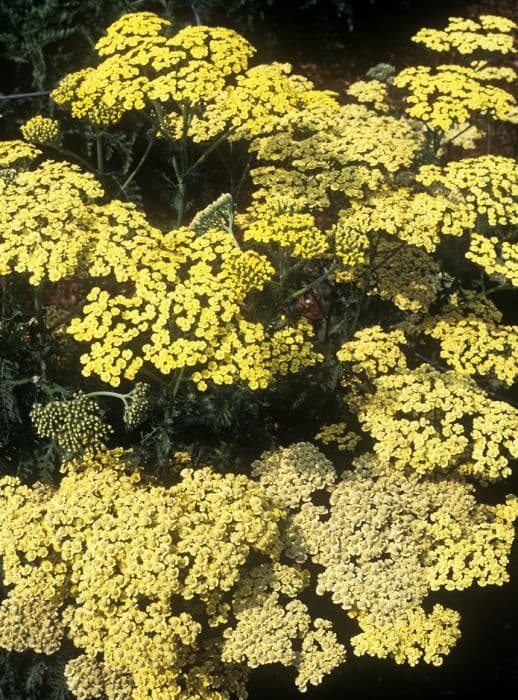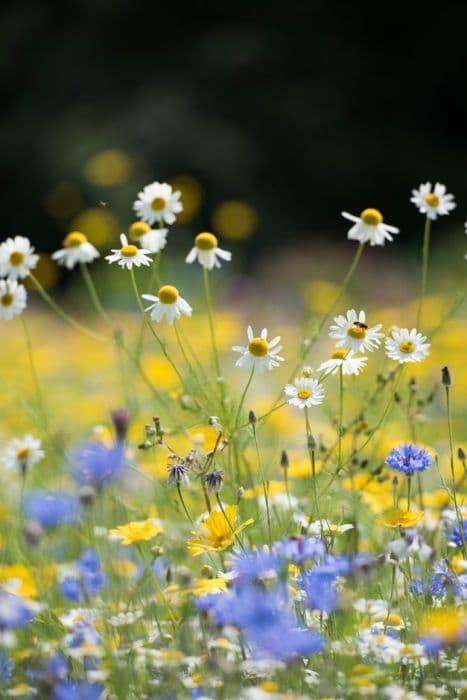French Marigold Tagetes patula Bonanza Series (d)

ABOUT
The Tagetes patula Bonanza Series, commonly known as French marigold, is known for its vibrant and colorful flowers. The plant has a bushy appearance, with deep green, fern-like foliage that serves as a lush backdrop for the showy blossoms. The flowers boast a mix of warm colors, ranging from yellow and orange to maroon and bicolor patterns. Each bloom has a distinctive pom-pom like appearance, with densely packed petals that give it a full, almost fluffy look. The flower heads are small to medium in size and create a profusion of color when the plant is in full bloom. The French marigold's compact nature and floriferous habit make it a popular choice for garden beds, borders, and containers where its colorful display can be shown off to full effect.
About this plant
 Names
NamesFamily
Asteraceae
Synonyms
French Marigold, Bonanza Marigold
Common names
Tagetes patula.
 Toxicity
ToxicityTo humans
The French marigold is not considered toxic to humans. Generally, ingesting parts of this plant is unlikely to result in serious poisoning. However, some people may experience mild gastrointestinal discomfort or allergic reactions if they are sensitive to the plant.
To pets
French marigold is also not known to be toxic to pets. While it's not advisable for pets to consume plant material, ingestion typically doesn't lead to serious poisoning. If a pet does ingest French marigold, they might experience mild gastrointestinal upset.
 Characteristics
CharacteristicsLife cycle
Annuals
Foliage type
Deciduous
Color of leaves
Green
Flower color
Mixed
Height
10-12 inches (25-30 cm)
Spread
6-8 inches (15-20 cm)
Plant type
Herb
Hardiness zones
2-11
Native area
Mexico
Benefits
 General Benefits
General Benefits- Aesthetic appeal: The Tagetes patula Bonanza Series, commonly known as French Marigold, offers bright and colorful blooms that enhance the beauty of gardens and landscapes.
- Pest deterrence: French Marigolds are known to repel certain insects and nematodes, making them a natural choice for companion planting.
- Ease of care: This plant is known for being low-maintenance and easy to grow, which makes it suitable for gardeners of all skill levels.
- Durability: The French Marigold is quite hardy and can withstand different environmental conditions, including poor soil.
- Long blooming period: The Bonanza Series has a prolonged flowering season, providing color from early summer until frost.
- Wildlife attraction: The blooms can attract beneficial insects like butterflies and bees to the garden.
- Edibility: The flowers of the French Marigold are edible and can be used to garnish salads and other dishes, adding a splash of color.
 Medical Properties
Medical PropertiesThis plant is not used for medical purposes.
 Air-purifying Qualities
Air-purifying QualitiesThis plant is not specifically known for air purifying qualities.
 Other Uses
Other Uses- The French marigold can be utilized as a natural dye source, imparting a yellow, orange, or red hue to fabrics depending on the part of the plant used and the mordant applied.
- Insect repellent properties of French marigolds in the garden can help protect vegetable crops by deterring harmful nematodes from the soil when planted as a companion plant.
- The strong scent of French marigold flowers is sometimes used in potpourri blends to provide a unique aroma that also repels pests in the household.
- French marigolds can be planted as part of a polyculture farming system to enhance biodiversity and promote a healthy ecosystem balance.
- The dried petals of French marigolds are used in some cultural ceremonies as natural confetti due to their vibrant color and biodegradability.
- French marigold petals can be incorporated into homemade natural crafts, such as pressed flower art, due to their rich colors and ease of pressing.
- Ritualistic uses in certain traditions involve the scattering of French marigold petals or whole flowers as offerings or during festive occasions.
- As a natural food coloring, the French marigold's petals can be used to color dishes and baked goods in place of synthetic dyes.
- French marigold flowers can sometimes be used in floral arrangements to provide a contrasting color and to take advantage of their relatively long vase life.
- The flowers of the French marigold can be incorporated into educational activities for children, teaching them about plant biology and the natural pigmentations in flowers.
Interesting Facts
 Feng Shui
Feng ShuiThe French Marigold is not used in Feng Shui practice.
 Zodiac Sign Compitability
Zodiac Sign CompitabilityThe French Marigold is not used in astrology practice.
 Plant Symbolism
Plant Symbolism- Life and Vitality: The Tagetes patula, commonly known as French Marigold, is characterized by its vibrant colors which are often associated with the energy and warmth of the sun, symbolizing a lively spirit and vitality.
- Protection: French Marigolds have been traditionally used in gardens to repel pests and are believed to protect other plants. This has extended into symbolism where they represent safety and defense against harm.
- Remembrance: Marigolds are often used in cultural festivals like Day of the Dead to honor and remember the departed, symbolizing the enduring nature of love beyond life.
- Beauty and Warmth: With their bright and sunny appearance, French Marigolds symbolize radiant beauty and the comfort of warmth, often associated with positive emotions and a welcoming environment.
- Healing: With a history of use in traditional medicine, the French Marigold is also associated with healing properties both physically and emotionally, representing the power of recovery and resilience.
- Overcoming Challenges: As marigolds are hardy and can thrive in diverse conditions, they symbolize the ability to overcome challenges and adapt to different circumstances.
 Water
WaterFrench Marigolds should be watered deeply once the top inch of soil feels dry to the touch, which typically translates to watering about once a week. However, the frequency can vary depending on temperature and weather conditions; they may need more frequent watering in very hot or windy weather. It's best to water these plants in the morning, allowing the foliage time to dry out during the day to prevent disease. When watering, apply water directly to the base of the plant to avoid wetting the foliage. Depending on the size of the plant and the weather, this may amount to around 1-2 gallons of water per square yard per week during peak summer months.
 Light
LightFrench Marigolds thrive in well-lit environments and require full sun to bloom profusely. They perform best when receiving at least 6 to 8 hours of direct sunlight daily. The ideal spot for growing French Marigolds is in an area where they are exposed to the morning sun and protected from intense late afternoon sun in extremely hot climates.
 Temperature
TemperatureFrench Marigolds prefer warm temperatures and are best grown when the outdoor temperature consistently stays above 60°F. They can survive maximum temperatures reaching into the 90s°F, but prolonged heat can stress the plants. They will not survive frost; temperatures below 32°F will kill them. The ideal temperature range for these marigolds is between 65°F and 75°F for robust growth.
 Pruning
PruningPruning French Marigolds is important to encourage bushier growth and more flowers. Pinch off the tops of the plants early in the season and deadhead spent blooms regularly to promote continuous blooming. Pruning can take place anytime during the growing season, but it's most beneficial when performed in the late spring or early summer and when dead flowers are removed promptly.
 Cleaning
CleaningAs needed
 Soil
SoilFrench Marigolds thrive in rich, well-draining soil with a pH between 6.0 to 7.5. A mix containing equal parts of loam, peat moss, and perlite or sand is ideal for these marigolds to flourish.
 Repotting
RepottingFrench Marigolds are typically grown as annuals, so repotting is not often necessary; however, if started indoors, transplant them outside after the frost.
 Humidity & Misting
Humidity & MistingFrench Marigolds prefer moderate humidity levels but are quite adaptable and can tolerate the average outdoor humidity.
 Suitable locations
Suitable locationsIndoor
Place in bright indirect light, ensure good air circulation for French Marigolds.
Outdoor
Plant in full sun with good air flow for best French Marigolds growth.
Hardiness zone
2-11 USDA
 Life cycle
Life cycleTagetes patula, commonly known as French Marigold, begins its life as a seed which, when sown, germinates usually within 5 to 7 days under optimal conditions. The seedling stage follows, characterized by the growth of primary leaves and then true leaves, establishing a root system and early vegetative growth. As the plant matures, it enters the vegetative stage where foliage expands, and the plant develops its characteristic bushy shape. The flowering stage comes next, with buds developing into vibrant flowers, usually within 6 to 8 weeks from sowing. French marigolds bloom continuously throughout the growing season, particularly if deadheaded regularly to promote further blooming. At the end of the growing season, the plant sets seeds, completing its life cycle, before succumbing to frost or dying back if grown in a climate conducive to perennials.
 Propogation
PropogationPropogation time
Spring to Summer
The French marigold, known scientifically as Tagetes patula Bonanza Series, is commonly propagated through seeds. To propagate French marigolds, seeds should be sown indoors about 6 to 8 weeks before the last frost date. Use a sterile, well-draining seed starting mix and place the seeds approximately 1/8 inch (about 3 mm) deep in the soil. Cover them lightly with the soil mixture and keep them moist but not saturated. Providing a steady temperature of around 70 to 75 degrees Fahrenheit (21 to 24 degrees Celsius) and plenty of light will encourage germination, which usually occurs within 5 to 7 days. Once seedlings emerge and grow to a suitable size with a strong set of true leaves, they can then be transplanted into individual pots or directly into the garden after the danger of frost has passed.









